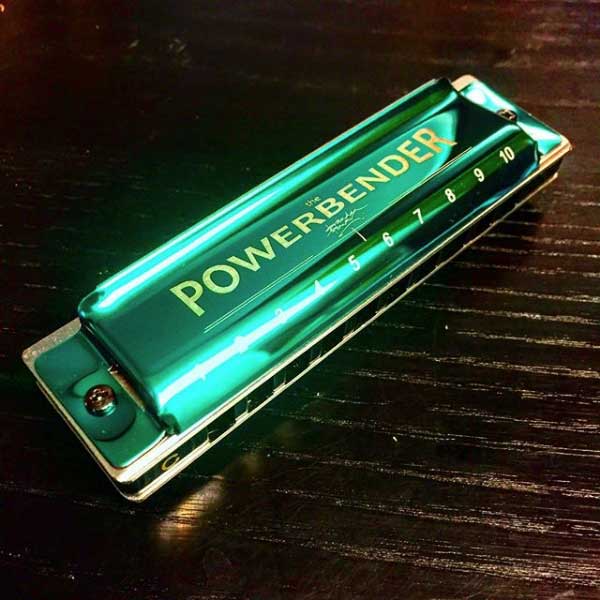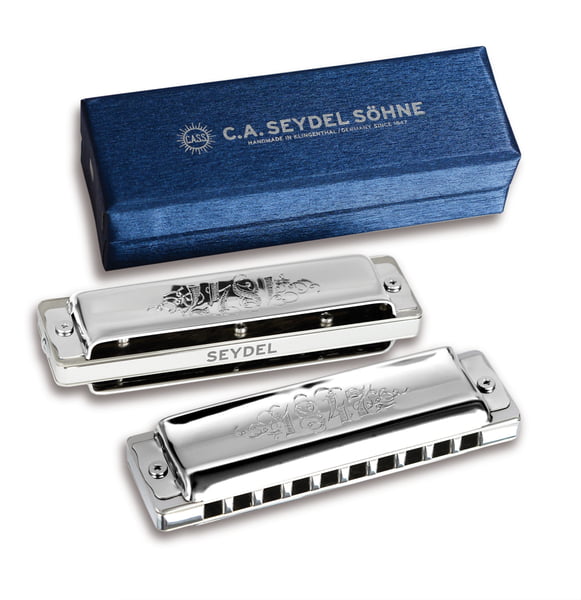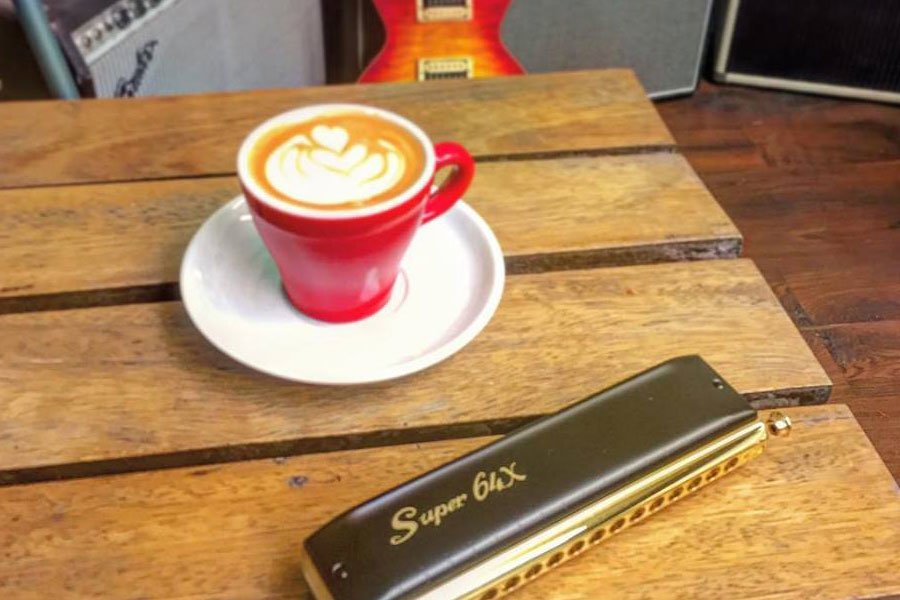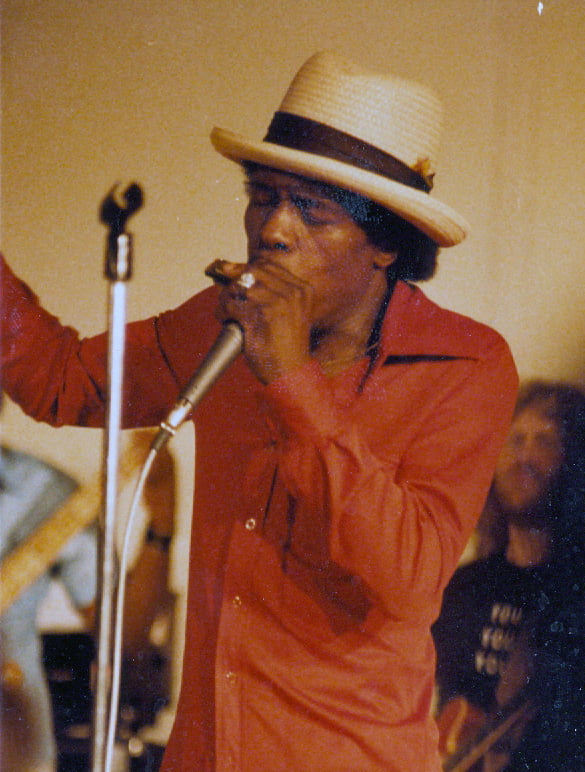How Altered Tunings Can Take Your Playing To The Next Level
Have you ever found yourself meandering away on a harmonica, repeating the same old riff? Or maybe you’re finding it impossible to play a particular tune on your ten hole harp, irrespective of how much you practise? The solution to both of these problems may be to move away from your old harmonica, and onto something fresh and… altered!(?)
What Are Altered Tunings?
Before we look in detail at the range of altered tunings on the market, and how these can be used to enhance your playing, it’s worth considering what exactly is deemed to be standard tuning. In the case of a 10 hole diatonic harmonica, the most commonly used tuning – and the one that is to such an extent a default that it often won’t be specifically mentioned on the harp or its packaging – is Richter.
Many musicians who pick up the diatonic harmonica after having previously learnt to play a chromatic instrument, such as the piano or guitar, are puzzled by the weird note layout of Richter tuning. It all starts off intuitively – C, D, E, then suddenly there’s a jump to G. ‘Where the hell has the F gone?’ is what many players think. Then, only a hole later, they’re confronted with a missing A. The middle of the harmonica follows a more logical pattern, lulling the player into a false sense of security before abruptly reversing the note order, then completely passing over the B at the top end. It all seems, to many beginners, to be unnecessarily complicated and not at all user friendly.
What we have to remember, however, is that Richter tuning was created with a very different genre of music in mind than the blues, folk and country music that harmonicas are most commonly used for today. In the early days of harmonica production, diatonics were used primarily for playing varieties of German Oom-pah music, thus the need for major chords to be available in the first four holes (necessitating, for example, the deletion of F and A in the lower octave on a C harp).
In the twentieth century, the limitations of Richter tuning were partially overcome by techniques developed predominantly by blues players, such as bending and playing the harmonica in positions other than first. In some ways, this stifled innovation; rather than changing the tuning to better reflect the needs of the music they were playing, musicians developed techniques to overcome the inherent limitations of a tuning that wasn’t really fit for purpose.
Much like the persistence of the QWERTY keyboard layout, Richter is still the dominant tuning merely because it is the default, and not because it is the best way of arranging notes on a harmonica (or keys on a keyboard in the case of QWERTY). However, there is now a wide range of harmonicas on the market that use altered tunings in order to enable greater expression and/or ease of use. Let’s take a look at some of these and see how they can improve both your playing and creativity.
Powerbender and Powerdraw
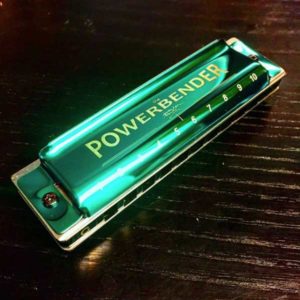
These two tunings were both created by Brendan Power to overcome some of the limitations of Richter tuning when bending notes. The Powerbender maintains the same layout as Richter on the lowest four holes, but modifies it from holes five to ten so that the draw note is the higher on on each hole. This enables easier draw bending in the upper register, and overblows on all holes.
The Powerdraw tuning is a combination of Richter and Powerbender; the bottom six holes are tuned the same as Richter, but the top four holes are tuned the same as Powerbender. This makes it a little more intuitive for players who have only every used Richter harps, but still allows for draw bends at the high end.
Buy these tunings if: You want to play soulful bluesy riffs and you want full chromaticism without having to resort to overdraws or blow bends.
Harmonicas available in these tunings: Brendan Power Powerbender, Brendan Power Powerdraw, Seydel Session Steel Powerbender, Seydel Session Steel Powerdraw.
Wilde Tunings
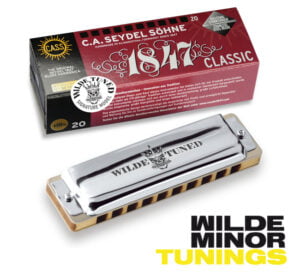
Will Wilde is a virtuoso diatonic player who specialises in rock guitar style riffs and solos on the harmonica. To enable him to achieve this he has worked with Seydel to create two signature tunings – Wild Rock and Minor Wilde – which are available on selected Seydel diatonics.
Wilde Rock is much like Powerbender in that it maintains the Richter note layout at the bottom end, but makes substantial changes in the upper register in order to allow for draw bends across the whole range of the harmonica. As this note layout was designed from scratch for playing blues and minor pentatonic licks, it enables much easier access to rock style riffs and solos, but is much less optimised for traditional folk and country tunes.
Minor Wilde is based on Wilde Rock tuning, but is designed for minor keys.
Buy these tunings if: You want to play fast, rocky riffs without Richter’s limitations at the high end.
Harmonicas available in these tunings: Seydel Session Steel Wilde Rock, Seydel 1847 Classic Wilde Rock, Seydel 1847 Classic Minor Wilde.
Paddy Richter
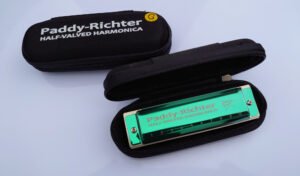
Another Brendan Power tuning, this time with the primary aim of making traditional Irish tunes easier to play quickly. It does this by changing just one note compared to standard Richter – hole three blow is raised by a tone, so that it no longer duplicates hole two draw. This makes it a much easier harp on which to play fast Irish jigs, which often make frequent use of the sixth note in the root key.
Buy this tuning if: You like to play traditional Irish tunes and find Richter tuning holds back your speed.
Harmonicas available in these tunings: Brendan Power Paddy Richter, Seydel Session Steel Paddy Richter, Seydel Noble Paddy Richter
Natural and Harmonic Minors
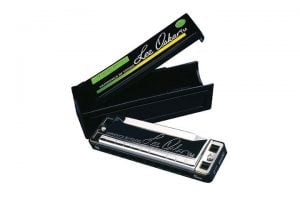
Whilst natural minor tunes can be played to some extent on standard Richter tuned harps in third, fourth of fifth positions, a natural minor tuned harp (usually designed to be played in second position, and labelled as such) will enable access to minor chords and will make the playing of minor key tunes much more intuitive.
Harmonic minor harps have a slightly different sound and are more suitable for Eastern music, with the raised seventh providing an exotic feel to the harmonica.
Buy these tunings if: You want to play minor key blues, reggae or folk tunes (natural minor) or you want to experiment with Eastern/Gypsy music (harmonic minor).
Harmonicas available in these tunings: Hohner Marine Band 1896, Lee Oskar Natural Minor, Lee Oskar Harmonic Minor, Seydel Session Steel Natural Minor, Seydel Session Steel Harmonic Minor, Suzuki Manji.
There is a whole host of other altered tunings out there besides these, so it’s worth doing a quick search to see if there is anything else that fits your needs, but the tunings above are the ones that I would recommend starting out with. Some of these, such as Powerbender, will help you to play existing licks more easily, whilst others, such as harmonic minor, will take you into whole new musical realms, and help to stop your playing becoming stale and repetitive.
As ever, any questions please drop us a line in the comments sections.
JP

